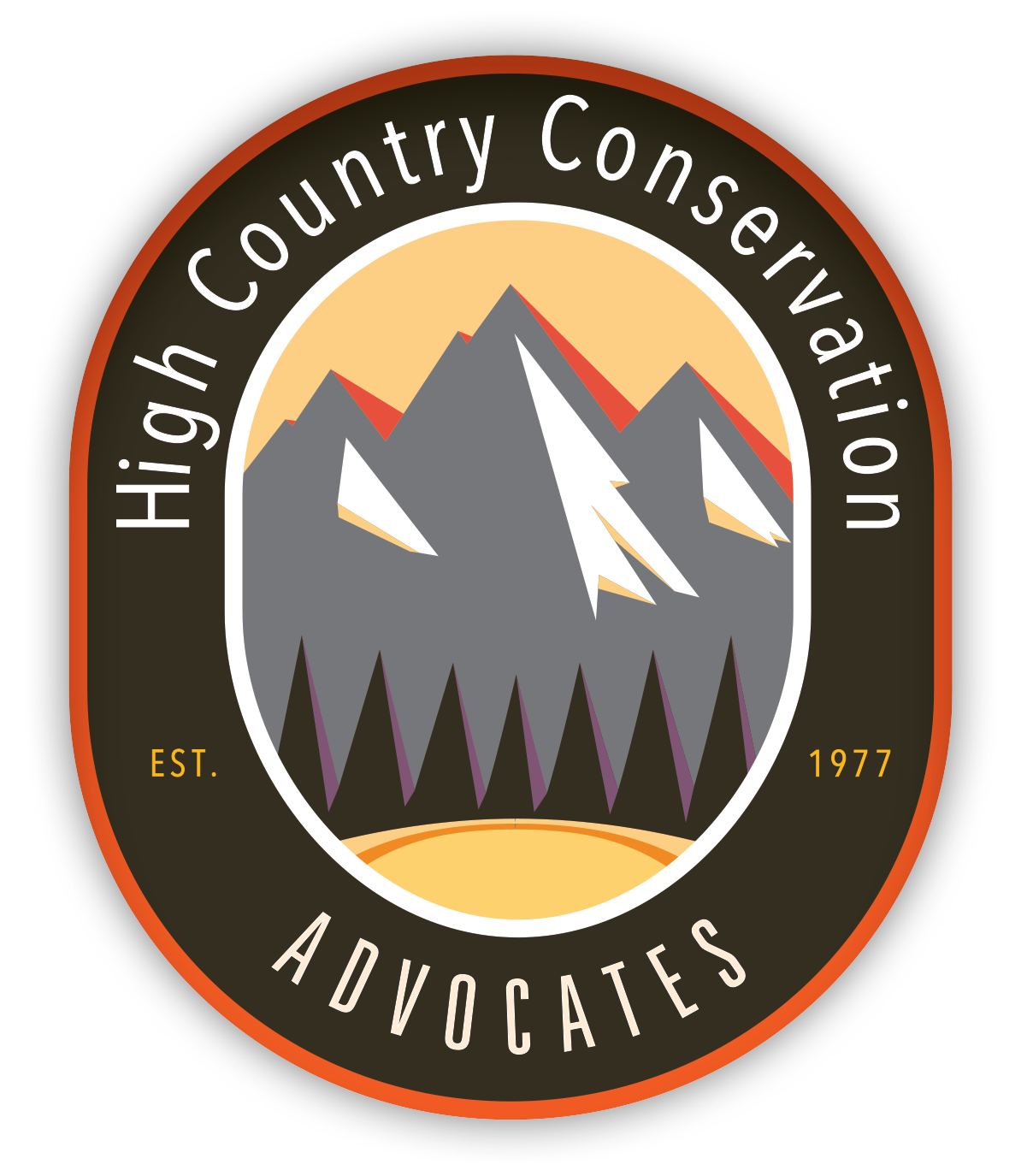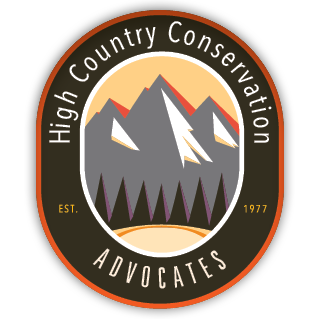Sargents mine pollution raises worries
From the Gunnison Country Times - Bella Biondini, Times Staff Writer
The Gunnison river in winter near the confluence of with Tomichi Creek.
Company seeking standards change
A mining company plans to propose that water quality standards on a creek near Sargents be lowered, a move that could allow more radioactive material to enter the Gunnison River watershed.
Homestake Mining Company intends to ask the Colorado Water Quality Control Division to remove the drinking water standard on Marshall Creek, a tributary of Tomichi Creek. Tomichi Creek enters the Gunnison River in Gunnison. If granted, the change would increase the amount of contaminants, particularly uranium, permitted to flow into Marshall Creek from the Pitch Mine Reclamation Site, an inactive uranium mine in Saguache County.
The Pitch Mine is located 6.5 miles due east of Sargents, a small unincorporated community along Hwy. 50. Underground uranium mining operations began in 1959 and were shifted to open pit mining when Homestake acquired the site in 1979. Reclamation started in 1984 after the mine was closed.
To support its proposal, Homestake is working with Saguache County to develop an ordinance that would prohibit the drilling of any future wells in areas near Marshall Creek in addition to creating plans to drill existing wells deeper to avoid surface contamination. If the company decides to proceed, Homestake intends to bring the proposal before the Colorado Water Quality Control Division at a hearing in June.
The uranium concentrations measured in Marshall Creek at Sargents range up to 65 micrograms per liter, exceeding the maximum contaminant level of 30 micrograms per liter in drinking water established by the Environmental Protection Agency (EPA). According to the EPA, long-term exposure to elevated levels of uranium can harm the kidneys and cause an increased risk of cancer.
Sonja Chavez, general manager at the Upper Gunnison River Water Conservancy District, said that when a particular stream such as Marshall Creek isn’t meeting a water quality standard, a mining company can request a temporary modification from the Water Quality Control Division. Under a temporary modification, the mine is allowed to be above the set standard for a short period of time, usually between three to five years.
During Homestake’s temporary modification of the uranium standard, which they received in 2017, the company spent over $20 million exploring different treatments to try and lower uranium concentrations in water leaving the site.
The temporary modification expires on Dec. 31, 2022. Instead of continuing to work to meet the original standard, Homestake is potentially proposing to remove the original drinking water standard entirely.
Stan Irby’s ranch sits on Tomichi Creek, about five miles downstream of the confluence with Marshall Creek. His family has been in the valley since 1942. Irby described it as a “no-win situation for the mining company, because there’s no way out.”
“Uranium has been in this water, it’s naturally there,” Irby said. “It was there before the Pitch Mine was ever developed.”
When he was a kid, the pitch mine “was just a tunnel and you could see the yellow flowing out,” he said. “And that is not happening now, I can guarantee you.”
“As far as reclamation up there, it’s amazing what they’ve done,” Irby said. “They’ve done a really good job.”
Homestake offered to place a conservation easement on Irby’s property. If pursued, the family would have to drill wells at a certain depth to avoid groundwater from Marshall Creek and would not be able to sue the mine if uranium or contamination enters the well in the future, Irby said. He considered Homestake’s offer acceptable.
“We feel like it would benefit us and yet still allow us the option of possibly doing some development in the future if we needed to,” Irby said.
Another part of Homestake’s proposed solution includes working with Saguache County to prevent the drilling of new alluvial wells — wells supplied by surface water — in areas adjacent to Marshall Creek, from its confluence with Indian Creek to its intersection with Tomichi Creek. Homestake also plans to redrill existing wells in Sargents deeper into the bedrock aquifer.
Clark Burton, director of closure operations with Barrick Gold, the corporation that merged with Homestake in 2001, said the proposal was prompted by the state’s designation of that section of Marshall Creek as a water supply due to its proximity to Sargents.
Any water source within 200 feet of Marshall Creek is considered connected and deepening the wells would “remove any uncertainty of that connectivity,” Burton said. “The uranium is not the issue in Sargents, there is no elevated uranium in Sargent’s wells.”
Homestake instead noted elevated levels of coliform and E. coli because Sargents discharges its septic systems into the same aquifer. Burton said that the community is supportive of the proposal because “they see this as an opportunity to get their wells redrilled into a much cleaner aquifer.”
Julie Nania, water program director at High Country Conservation Advocates, said that although redrilling wells might fix the problem for some households, it would prohibit future users of the water source from benefiting from cleaner water.
“I think that should be a big red flag for communities,” Nania said. “We should be looking to preserve the water source and the stream as a whole.”
Along with its potential to affect future water users, letting the mining company “off the hook” for water treatment is “shifting the burden downstream,” Nania said.
Ashley Bembenek, a water quality scientist at Alpine Environmental Consultants, is interested in the potential downstream effects it could have on Tomichi Creek. She estimated that roughly 300 ditches divert water from the creek between Sargents and Gunnison.
“And if you assume that each ditch has a house associated with it, that’s about 300 homes that may rely on groundwater wells for their drinking water,” she said. “So the potential change can impact Gunnison County.”
“If this is approved, it may send a message that dischargers can prevent future water use or provide alternate water supplies rather than fully clean up pollution,” Bembenek said. “And I just think that’s the wrong approach.”
(Bella Biondini can be contacted at 970.641.1414 or bella@gunnisontimes.com.)


